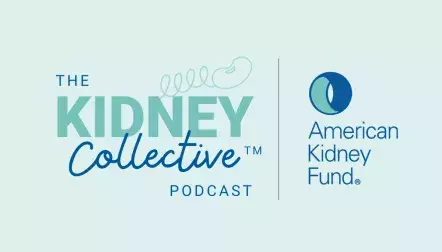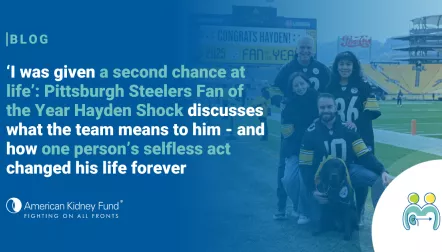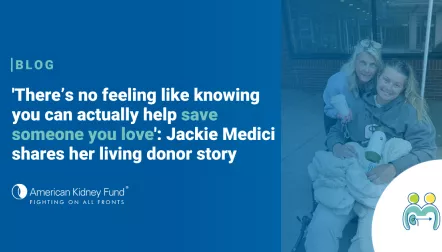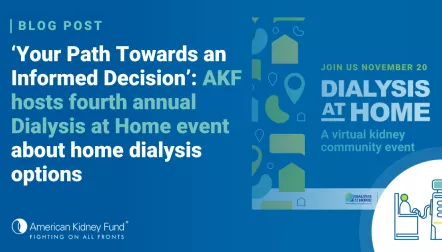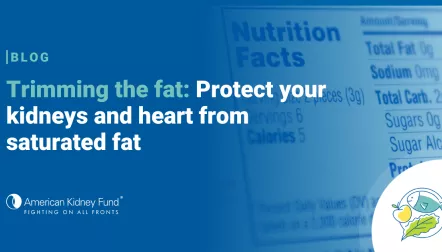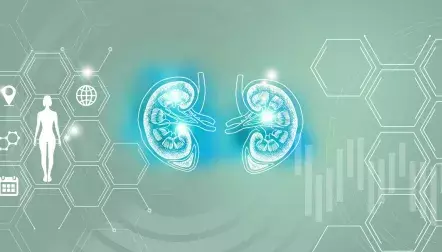
Blog post
The ripple effect of becoming a living kidney donor
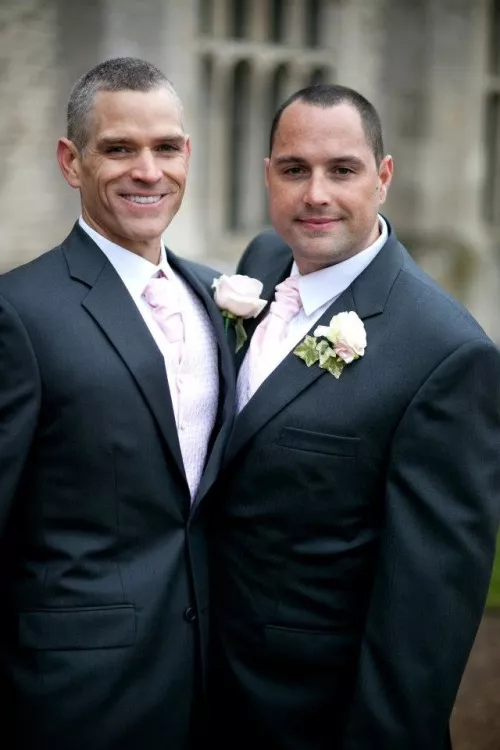
Growing up in a household of sisters, Adam Ciperski (pictured on the left) was excited to welcome his twin brothers, Zach and Blake, into the world. Almost immediately after the twins were born, the brothers quickly developed a special relationship. Ten years their senior, Adam always looked out for his younger brothers, including decades later when he donated his kidney to Zach.
It came as a surprise to the Ciperski family when Zach's annual sports physical during his senior year of high school revealed that the all-state hockey goalie had IgA nephropathy.
"We were in a bit of shock," Adam remembers. "You wouldn't expect a rare disease like this to happen to such a young, healthy and athletic person. It really sent a wave through the family."
When Zach's kidneys began to fail after his freshman year of college, the family jumped to get tested to see if any of them could become a living kidney donor. When the tests revealed that Adam was the best match for Zach, he knew right away that he would donate his kidney. "I guess it was an older brother thing. There was just no doubt in my mind that I would help," Adam explains.
On Oct. 5, 2000 — a few weeks shy of Zach's 20th birthday — the brothers underwent transplant surgery at Columbia Presbyterian Hospital in New York. Adam remembers that after the surgery, Zach "instantly got better." In fact, Zach was the one to visit Adam's bedside in the hospital.
Meanwhile, Adam's recovery process was a bit harder on him because his living donor transplant surgery was more invasive than the common laparoscopic procedure done today. For Adam's surgery, a big incision was made, and the surgeon even removed a couple of his ribs to make it easier to take out his kidney. With the less invasive laparoscopic surgery, the surgeon instead uses very small incisions and a thin, lighted tube to look inside the body.
"I think that was the part I didn't anticipate as much," Adam says of his recovery. "I was kind of ready for it, but coming out of the surgery, it really did take a lot out of me. I've become friends with other living donors, and they're like, 'I've just got these little incisions you can barely see. The kidney came out and I was fine the next day.'" Adam says he has "a big 'C' incision that looks like I got bit by a shark. A friend of mine told me it's a great scar to have while I'm at the beach."
But after the surgery, Adam and Zach's beach days were still a while off. They both hunkered down at their parents' home in New Jersey to watch a steady stream of Blockbuster rentals while they recovered together. "If we were to do it today, we could probably keep Blockbuster in business," Adam jokes. "We would watch three or four movies a day. My dad would get home from work and his first task would be go to Blockbuster to change out those movies."
Today, Adam says he is more than fine living with one kidney. In fact, he is a triathlete and a four-time Ironman. "After a couple months, you wouldn't know anything is different."
Although Adam had no hesitations about donating his kidney, Zach was worried that he would feel constantly indebted to his older brother. Adam was adamant about putting those concerns to rest and told his brother, "Your only obligation to me is live long, healthy and happy. If you do that, then that's my reward."
Every year on the anniversary of their transplant surgeries, Zach sent Adam a letter highlighting all the things he was able to accomplish that year because of Adam's lifesaving gift. Adam saved each letter in a journal as a written record of the impact of becoming a living kidney donor.
Adam's gift of a kidney extended Zach's life by an additional 13 years. Between the time of the transplant and his death on Jan. 26, 2014, Zach lived an incredibly full life. He went on to complete college, earn his master's degree, begin a successful career and travel the world, visiting Europe, Asia and Central America. He also became involved with Fabretto, a nonprofit that helps underserved children in Nicaragua gain access to education. "Zach was able to create this sustaining legacy," Adam says. "After his passing, a library was established in Nicaragua in his name."
For Adam, his brother is just one example of the positive impact of becoming a living kidney donor.
"He got a ton done in his extra 13 years. To me, that is the ultimate blessing and the thing I cherish," Adam says of Zach. "And now all these kids go to his library, so he is having a positive impact on people through the work he did post-transplant. That's the beauty of it and that's why you donate. Donating creates a ripple effect — look at all the lives he continues to touch because he got those extra years."
Learn more about becoming a living donor and starting your own ripple effect.
